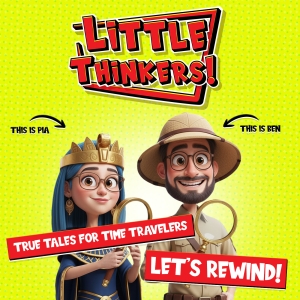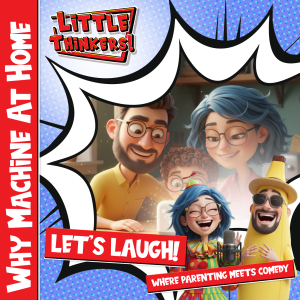The Tiny Hero Who Made Hearts Beat Steady
Imagine This Amazing Story
Picture a young boy sitting at a kitchen table in Dallas, Texas, watching his mother struggle to breathe. Her heart was weak, and back in 1928, doctors couldn’t do much to help. But this boy, named Otis Boykin, had something special – curious hands that loved taking apart broken radios and a mind that saw patterns everywhere. He didn’t know it yet, but one day he would create something smaller than your thumb that would save millions of hearts around the world!
What if I told you that the most important invention for helping sick hearts wasn’t a giant machine, but a tiny electronic part called a resistor? And what if the person who made it perfect was someone who faced unfair treatment because of his skin color, but never gave up on his dream to help people? This is the incredible true story of Otis Boykin, the gentle genius who made hearts beat steady!
A Boy Who Listened to Patterns
In the hot summer of 1928, nine-year-old Otis Frank Boykin lived in Dallas, Texas. While other kids played outside, Otis was fascinated by the world of electronics. He would carefully take apart broken radios with his small hands, studying every wire and tiny part. He kept all the colorful pieces in a cookie tin on the kitchen table, arranging them in neat rows like a treasure collection.
Otis was different from other children. He listened carefully to everything around him – the rumble of streetcars, the crack of lightning during storms, and the steady tick-tick-tick of clocks. He discovered that every sound had its own special pattern, and patterns could be controlled and made better.
Fun Fact!
Did you know that resistors are like traffic controllers for electricity? Just like a traffic light controls how fast cars can go, resistors control how much electricity flows through a circuit. Without them, electronic devices would get too much power and break!
But young Otis carried a heavy sadness in his heart. His beloved mother, Sarah, had heart failure. In those days, there were no pacemakers or heart medicines like we have today. All he could do was watch her rest often and struggle to catch her breath. This experience would shape his entire life’s work.
School Days and Big Dreams
At Booker T. Washington High School in Dallas, Otis was the student who got excited about math and science while others focused on sports. His teacher showed the class something amazing – a crystal radio that worked without any batteries! It used just a wire, a special rock crystal, and a coil to pick up radio signals from the air.
Otis leaned in close, studying the neat lines and tiny parts. He loved how one small change could affect the entire signal. But growing up in the 1930s and 1940s, Otis faced unfair treatment because he was African American. Many doors were closed to him, and some people tried to stop him from pursuing his dreams.
Instead of giving up, Otis made himself a promise. He would treat every problem like a broken circuit – he would solve it step by step, piece by piece, until everything worked perfectly again.
Life Back Then
In the 1940s, most homes didn’t have televisions yet! Families gathered around large wooden radios to listen to shows, music, and news. These radios had glowing tubes inside and needed time to “warm up” before they would work. Imagine waiting several minutes just to hear your favorite song!
The College Years and the Problem He Discovered
Otis earned a scholarship to study at Fisk University in Nashville, Tennessee. In the early morning hours, you could find him in the electronics lab, breathing in the smell of hot solder and paper. As a lab assistant, he learned how electronic parts behaved when they got warm.
Here’s where Otis discovered a big problem that no one else was really paying attention to. When electronic parts called resistors got hot, they would change their values! This meant that radios would start crackling with static, and signals would wander off like lost puppies. For most people, this was just annoying. But for Otis, who remembered his mother’s irregular heartbeat, this was a problem that absolutely had to be solved.
He kept a small notebook where he sketched circuits and wrote down his ideas. He learned that steady parts build steady systems – and steady systems could one day save lives.
Did You Know?
Fisk University, where Otis studied, was one of the first universities in America to welcome African American students. It was founded in 1866 and has produced many famous scientists, musicians, and leaders, including the singers from the world-famous Fisk Jubilee Singers!
Chicago and the Great Discovery
After college, Otis moved to the big city of Chicago, where he got a job at a company that made radios and televisions. Every day, he saw the same frustrating problem – resistors that heated up and changed their values, making circuits lose their balance.
But instead of just complaining about it, Otis decided to fix it once and for all. He moved to a quiet room with just a workbench and a lamp. There, he tested resistors one by one, warming them up and measuring how much they changed. The numbers kept “walking away” from where they should be, like students wandering out of line.
Otis set himself a simple but powerful goal: build a resistor that keeps its promise, no matter what!
The Night Shift Inventor
During the day, Otis worked at the radio company. But at night, he took classes at the Illinois Institute of Technology, learning advanced math and deeper circuit design. Money was tight, and sadly, he had to leave school before finishing his degree. This was heartbreaking, but Otis didn’t let it stop him.
He partnered with an engineer named Hal Fruth, and together they formed their own small company. Their mission? Create the world’s most precise and reliable resistor. They ordered special wire, ceramic cores, and protective coatings. Otis built custom tools to wind the wire as tight and neat as thread on a spool.
Inventor’s Workshop
Imagine Otis’s workshop: tables covered with coils of colored wire, meters with needles that danced when electricity flowed through them, and the smell of hot solder in the air. He had tiny screwdrivers, magnifying glasses, and notebooks filled with careful measurements. It was like a mad scientist’s lab, but for helping people!
The Moment of Truth
Finally, the day came to test Otis’s new design. He flicked a switch, and the meter climbed and settled. Then came the real test – he warmed the resistor with a gentle heat source. The needle on the meter barely moved! He shook the workbench. Still steady. He turned up the electrical current. The resistor held firm.
It took many nights of patient work and countless tests, but Otis had done it. He created a precision resistor that stayed true under pressure. It looked like a simple tiny bead with wires sticking out, but inside it carried a powerful promise: “I will hold steady when others fail.”
Amazing Achievement!
Otis’s resistor was so good that it could maintain its electrical value even when heated to over 300 degrees Fahrenheit – that’s hotter than boiling water! This might not sound exciting, but for electronic devices, this was like having a superhero part that never gets tired.
Success and Growing Fame
By the late 1950s, Otis received his first patent for his wire precision resistor. Soon, more patents followed. Factories started calling, wanting to buy his amazing resistors. Radios sounded clearer than ever before. Television pictures stayed sharp and didn’t flicker. Early computers, which were room-sized machines in those days, needed reliable parts – and they welcomed Otis’s inventions with open arms.
But even as success grew, Otis kept thinking about something more important than radios or TVs. He remembered his mother’s weak heart and thought: “Hearts are signals too. Hearts need patterns that don’t break.”
The Heart Connection
In the early 1960s, doctors had begun using amazing new devices called pacemakers to help weak hearts. These devices sent tiny electrical pulses to help hearts beat regularly. But here was the problem – early pacemakers weren’t very reliable! They were big and bulky, sometimes worn outside the body, and they could stop working when they got too hot or were shaken around.
This was completely unacceptable to Otis. A radio crackling with static was annoying, but a pacemaker failing could cost someone their life. He knew exactly how to solve this problem – the same way he had tamed drifting resistors.
Pacemakers Then and Now
The first pacemakers in the 1950s were as big as a deck of cards and had to be carried in a pocket with wires running to the heart! Today’s pacemakers are smaller than a silver dollar and can last 10-15 years. They’re so smart they can adjust to whether you’re sleeping, walking, or running up stairs!
The Life-Saving Control Unit
Otis designed something revolutionary – a stable control unit for pacemakers that used his precision resistors and smart switching technology. This unit shaped each electrical pulse to match exactly what the heart needed. It guarded against dangerous electrical spikes and refused to drift off its proper timing.
Engineers tested his design by shaking it, heating it, and cooling it. The pulse pattern stayed as steady as footsteps on a flat path. Doctors could finally trust these devices completely, knowing they wouldn’t fail their patients. Even better, because fewer parts failed, the cost went down, meaning more people could get the help they needed!
Quiet Heroes in Hospital Rooms
In hospital rooms across America, patients rested peacefully while monitors beeped steadily beside their beds. Each beep represented a heartbeat guided by Otis’s invention. The patients and their families never knew the name of the inventor whose work was keeping their loved one’s heart beating regularly. And that was perfectly fine with Otis – he preferred quiet results over loud fame.
He thought about people being able to climb stairs without fear, parents lifting their children without getting dizzy, and hearts that didn’t skip or stutter. This was why his tiny resistor mattered so much – it helped change lives in the most important way possible.
The Numbers That Matter
By the time Otis perfected his pacemaker control unit, heart disease was the leading cause of death in America. Today, over 3 million people worldwide have pacemakers, and many of them work using principles that Otis developed. That’s like helping the entire population of Chicago live healthier lives!
Testing, Testing, Always Testing
Back in his Chicago lab, Otis never stopped trying to make his inventions better. He would deliberately try to break his designs! He strapped control units to vibrating tables that growled and shook. He heated them and cooled them. He bent wires and tested them in every possible way.
Why? Because trust comes from careful proof. He wanted every nurse, doctor, and patient to know that his devices would work perfectly, every single time. The steady beeping sounds on hospital monitors didn’t care about shaking or temperature changes – they just kept time, exactly as they should.
Around the World and Back Again
In the mid-1960s, Otis traveled to Paris, France, where he worked as a consultant and shared his designs with European engineers. Picture him sitting in a cozy Parisian café, sketching circuits in his notebook while rain tapped against the windows. Engineers from different countries asked him careful questions, and he answered with patient, step-by-step explanations.
His work wasn’t just about one resistor anymore – it had become a complete method for keeping electronic patterns stable and true. Word spread throughout the scientific community, and his control ideas were adopted in more and more medical devices.
Fun Fact About Paris!
While Otis was in Paris sharing his inventions, the city was becoming a center for early computer development. The same principles he used to make resistors stable were being used to build some of the world’s first reliable computers. Talk about perfect timing!
The Teacher and Mentor
When Otis returned to Chicago, he didn’t just keep working alone. He became a mentor to younger engineers, teaching them tricks that couldn’t be found in any textbook. “Keep your wire leads short to reduce electrical noise,” he would say. “Test everything at both high and low temperatures. And always, always write clear notes about what you discover.”
He rarely talked about the unfair treatment he had faced because of his race, but he let his exceptional work speak loudly for him. One by one, patents arrived at his office – eventually, he would hold 26 patents in total! Some were for different types of resistors, others for burglar-proof cash registers, and still others for improved air and chemical filters.
More Amazing Inventions
While Otis is most famous for his work on resistors and pacemakers, he invented many other useful things too! He created improved filters that made air cleaner and chemical processes safer. He developed burglar-proof cash registers that were much harder to break into. He even worked on early computer components that helped make calculations faster and more accurate.
All of his inventions had something in common – they were practical tools that made daily life better, safer, and more reliable. Whether it was protecting people’s money, cleaning the air they breathed, or keeping their hearts beating steadily, Otis cared about creating things that truly helped people.
The Problem-Solver’s Toolkit
Otis developed his own special method for solving problems: First, find what’s wobbling or unstable. Next, test it carefully to understand exactly why it’s failing. Then, design a solution and test it some more. Finally, test it again under different conditions. This method helped him solve not just electronics problems, but all kinds of challenges in his life!
Helping Hearts Around the World
As the years passed, Otis’s work reached quiet neighborhoods everywhere. People with pacemakers could take morning walks with their dogs, push their grandchildren on swings, and tie their shoes without worry. The medical devices in their chests could handle climbing stairs, walking in hot or cold weather, and riding on bumpy bus rides.
Inside those life-saving devices, Otis’s tiny parts worked in perfect harmony. His resistors held their values exactly right, and his control circuits shaped each electrical pulse to match what each person’s heart needed. Few people knew his name, but that didn’t matter to him. He wanted to see people living their lives without fear – and that was reward enough.
Never Forgetting Where He Started
Throughout his successful career, Otis never forgot his mother’s struggle with heart failure, or the young boy who had watched her fight to breathe. He carried that memory like a compass, always pointing him toward work that would help people with similar struggles.
He also remembered the doors that had been closed to him because of unfair prejudice. But instead of becoming bitter, he kept his focus straight and steady – just like his resistors! He continued designing and consulting in Chicago, checking every new part with the same calm, careful method he had always used.
Words of Wisdom
Otis believed that honesty was just as important as brilliance. When something worked, he wrote it down. When something failed, he wrote that down too, and then he shared both the successes and failures with other inventors. This honesty helped other people build better devices and kept patients safer year after year.
The Legacy Lives On
In 1982, Otis Boykin’s own heart grew weak, and he passed away quietly in Chicago. But his work didn’t end with him. It continued to live inside the devices that watched over people while they slept. It lived in the steady lines on hospital monitors and in the relief on families’ faces when their loved ones received life-saving treatment.
Some people leave behind legacies of tall buildings or famous speeches. Otis left behind something different – tiny parts that never broke their promises, parts that kept their word every single second of every single day. That kind of legacy lasts forever.
Modern Miracles
Today’s pacemakers are absolutely amazing! They’re smaller than a silver dollar and weigh less than an ounce – about the same as six quarters. They can be placed completely under the skin, and they’re so smart that they can tell when you’re exercising and speed up your heart rate automatically. Some can even send information to your doctor through your smartphone!
But inside every modern pacemaker, you’ll find circuits that follow the same principles Otis proved long ago: keep electrical resistance stable, guard every pulse carefully, and make sure everything can be tested thoroughly. His methods are also used in cell phones, cars, computers, and countless other devices that need clean, steady signals.
Amazing Modern Facts!
- Today’s pacemaker batteries can last 10-15 years before needing replacement
- Some pacemakers are now so small they can be inserted directly into the heart through a blood vessel
- Modern pacemakers can store information about your heart rhythm and share it with doctors wirelessly
- There are now pacemakers that work with both chambers of your heart and can coordinate their timing perfectly
The Bigger Picture
Otis Boykin’s story teaches us that the most important inventions often come from people who care deeply about solving real problems. He didn’t set out to become famous – he just wanted to help people like his mother live better lives. His gentle approach to problem-solving and his refusal to give up when faced with obstacles show us that persistence and caring can literally change the world.
His work reminds us that heroes don’t always wear capes or appear in movies. Sometimes the greatest heroes are the people working quietly at workbenches, measuring tiny parts, winding careful coils, and writing down their discoveries so others can build on their work.
What We Can Learn Today
Otis’s approach to solving problems is something we can all use in our daily lives. When you face a challenge – whether it’s a difficult math problem, learning to ride a bike, or figuring out how to help a friend – try the “Otis Method”:
- Look carefully at what’s not working right
- Test different solutions, one at a time
- Keep careful notes about what works and what doesn’t
- Be patient and don’t give up after the first try
- Share what you learn with others who might have similar problems
Try This at Home!
You can see resistors in action yourself! Ask an adult to help you look inside an old electronic device that doesn’t work anymore (like a broken radio or calculator). You’ll see tiny cylindrical parts with colored bands around them – those are resistors! Each color represents a number, and the combination tells you how much the resistor can slow down electricity.
The Heart of the Matter
In the end, Otis Boykin’s greatest tool wasn’t really his precision resistor – it was his way of thinking. He believed that every wobble could be steadied, every drift could be tamed, and every problem could be solved with enough patience and care. This is how bridges stand strong, how hearts keep beating, and how small things become great.
The world remembers his 26 patents and his groundbreaking inventions. But perhaps more importantly, the world remembers the millions of people who can walk farther, climb higher, and live fuller lives because their hearts beat steadily. Behind every calm beep on a hospital monitor, there’s the gentle spirit of a man who never forgot his promise to help hearts that once flickered hold true.
Otis Frank Boykin proved that a calm purpose and a caring heart can indeed change the world – one tiny resistor, one steady pulse, and one saved life at a time. His story continues every day in hospital rooms around the globe, where the steady rhythm of healing hearts carries on his remarkable legacy.











